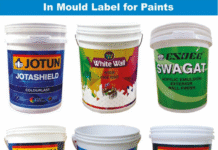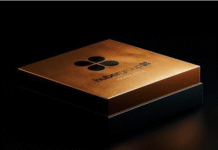
On a recent Heidelberg-sponsored tour of Europe, print and packaging journalists from Asia Pacific had an opportunity to meet the top management of the company and to learn about UV and LED curing as it pertains to printing on paper and paperboard. IST METZ showed us its new LEDcure for sheet-fed offset printing, which it claims is the most efficient LED system of its kind. The tour also gave us an opportunity to witness a demonstration of the LEDcure running on a Heidelberg CD 102 press at one of the several IST plants in Nürtingen in Southern Germany. The 6-color plus coater press printing on packaging board used only two LED curing systems—one for the UV inks and the other at end of press for the coatings.

We also saw the manufacturing operations of both conventional UV lamps and reflectors since the company and its subsidiaries manufacture almost all the curing system components, including power supplies which are then assembled, manufactured and integrated at Nürtingen. IST is a medium-sized engineering group with 10 daughter companies and international operations with about 500 employees. Our visit was actually a great opportunity to see and learn about the complexity of UV curing and the seriousness that is needed in selecting the appropriate UV curing technology for each application.
 IST METZ has produced curing systems for print and coatings, varnishes, silicones, adhesives and other materials, instantly using UV light for 40 years. The group offers the world’s largest product portfolio of high-performance UV lamp and UV LED systems supplemented by hot-air (infrared) drying systems as well. In India, the IST UV curing systems are ubiquitous on Heidelberg packaging presses and increasingly on high-speed web offset newspaper presses for printing full color on glazed newsprint and high brightness or semi-commercial papers. Heidelberg Gallus narrow web flexo label presses in India tend to use both IST and GEW UV systems.
IST METZ has produced curing systems for print and coatings, varnishes, silicones, adhesives and other materials, instantly using UV light for 40 years. The group offers the world’s largest product portfolio of high-performance UV lamp and UV LED systems supplemented by hot-air (infrared) drying systems as well. In India, the IST UV curing systems are ubiquitous on Heidelberg packaging presses and increasingly on high-speed web offset newspaper presses for printing full color on glazed newsprint and high brightness or semi-commercial papers. Heidelberg Gallus narrow web flexo label presses in India tend to use both IST and GEW UV systems.
Although the standard UV systems from the company are still the mainstay for curing of UV inks and coatings for packaging, and will likely remain so for the foreseeable future, there is an undoubted fascination for UV LED systems in the print industry. Commercial printers are especially interested because of the perception that curing can be effected with fewer UV lamps in a multicolor press. There is also strong evidence that LED technology requires much less energy and that the lamps have much longer life than conventional UV lamps. The flagship for the new IST product range is the water-cooled high-performance LEDcure system for sheet-fed offset printing, which is clockable for timed on and off operation that can help to save both lamp life and energy.
The variable LEDcure system can be used for the differing or various requirements of sheet-fed offset presses. Newly developed, interchangeable optics ensure optimum light yield on the substrate. The systems are available in different wavelengths or in a mixture of wavelengths, the standard being 385 nm. Water-cooled LED chips guarantee a high level of efficiency and system durability.
Compact. Modular. Powerful

A clever modular basic concept combined with its extremely robust and compact design allows the user maximum flexibility and versatility with LEDcure. It’s freely scalable in length and can be adapted to all machine formats and installation situations. This makes it possible to use an LEDcure unit at different positions on a machine. The compact design also gives the user access to important areas of the printing press at any time.
The new LEDcure completes the entire redesigned IST LED solution range, which it offers together with its subsidiary Integration Technology Ltd. Synergies between the two companies increasingly come into effect, such as with the XT8 Booster which gives the LEDcure up to 30% more power than conventional LED systems. Other highlights of the new LEDcure include the simple exchange of the optics or the possibility of retrofitting the LED chips.
At the usual distance of 80 mm to 100 mm from the substrate, the new LEDcure offers a very high performance in sheet-fed offset printing. This is not only due to the maximum irradiation intensity, the so-called peak, but the wide irradiation field of the LEDcure offers an extra drying time, also called dose. The wide irradiation field is often as decisive for efficient curing of the LED inks and coatings as the peak radiation. As a result, customers and suppliers of consumables have more flexibility in the design and choice of inks and coating or paints and varnishes.










